
Coral Reefs Biotic Factors


Coral Reefs Objectives:
- List the characteristics of coral animals.
- Describe the relationship between corals and zooxanthellae.
- Explain the process of “coral bleaching.”
This video provides an overview of corals.

Coral reefs are found in warm and shallow waters and have high biodiversity despite being surrounded by relatively nutrient-poor oceanic water.
The nutrients are located in the bodies of the organisms, living and dead.
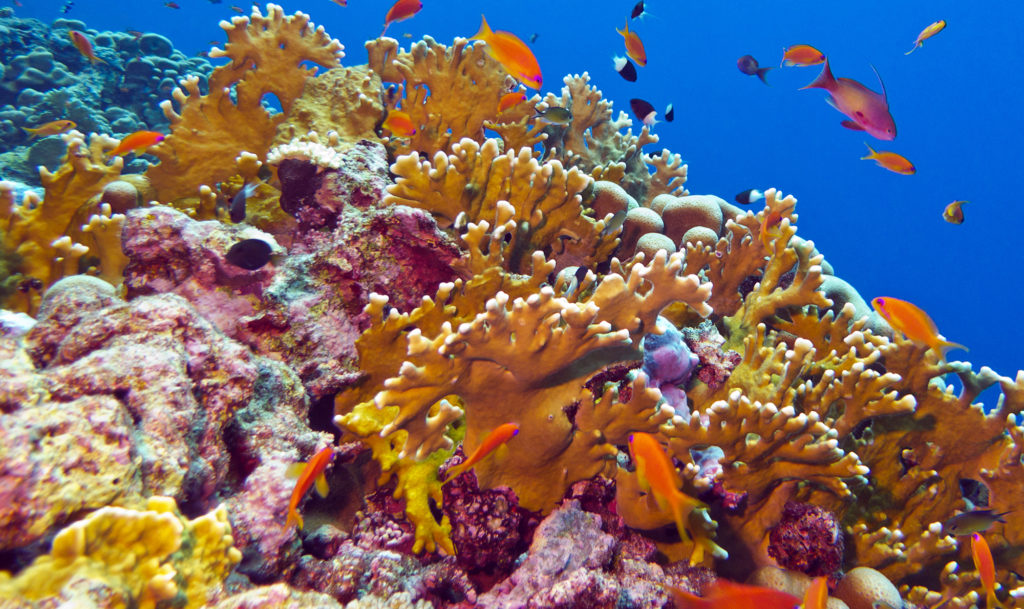
Coral reefs are built upon the dead mineralized remains of coral remains. Live coral animals live on the surface, supporting a wide range of organisms. In a sense, coral animals are analogous to grasses in a grassland or trees in a forest.
This video shows the structures left behind when coral animals die.
Coral reefs are often covered with colonies of different species of live coral animals. They catch plankton out of their water with tentacles. Corals are cnidarians and have stinging nematocysts on their tentacles that help them immobilize their prey.
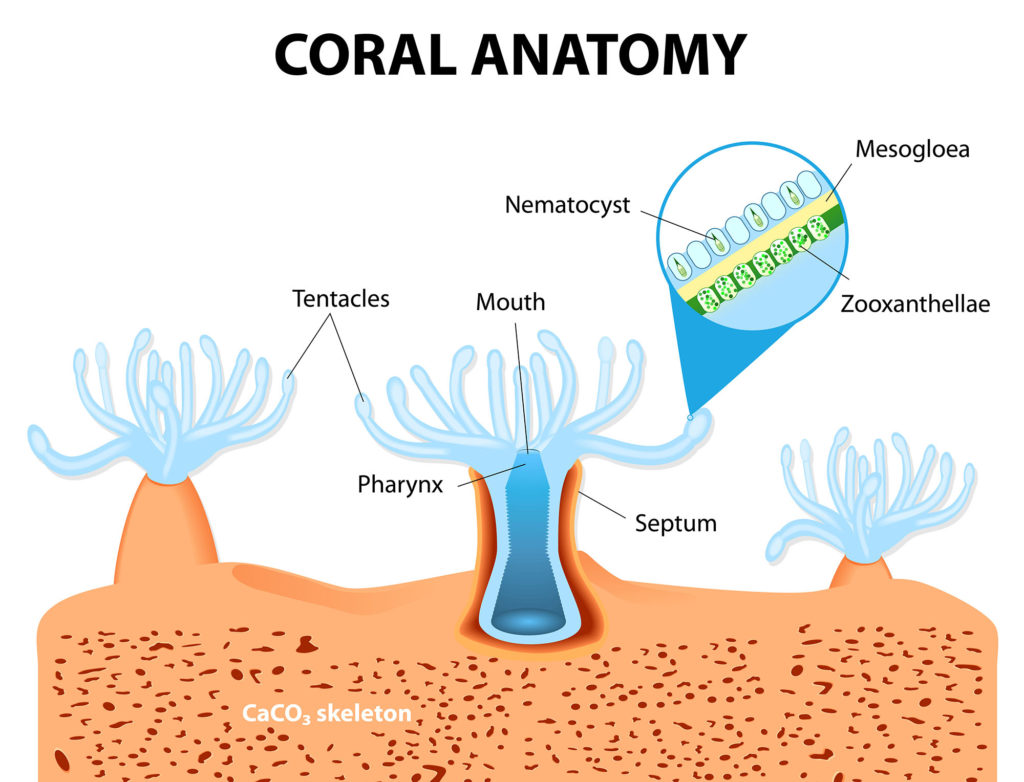
All of these videos show different types of coral animals. Each species has tentacles to grab prey and a mouth for feeding and eliminating waste. Some of the corals look a lot like anemone species. Some clown fish host either.
Coral animals have microscopic protists called zooxanthellae living inside of them.
Zooxanthellae are dinoflagellates, a group of protists that are photosynthetic and can move through water with two whip-like structures called flagella.
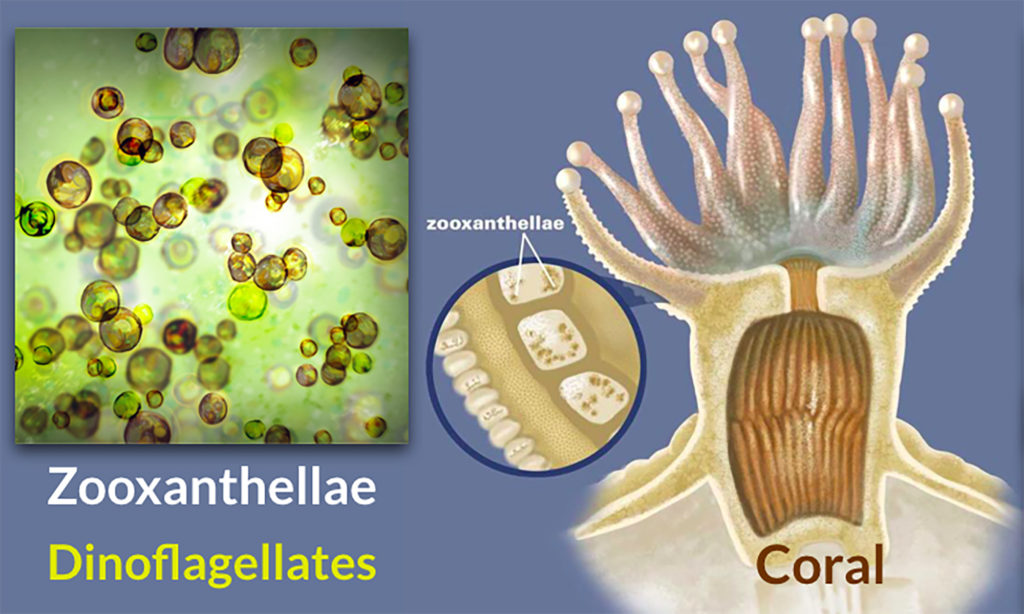

The coral animal gets sugars from the zooxanthellae, and the smaller protists get nutrients from the coral and a place to live. What is the name for this win-win relationship?
Answer: mutualism, or
mutualistic endosymbiosis
Changes in environmental conditions can reduce zooxanthellae in corals, leaving the coral animals pale and unhealthy.
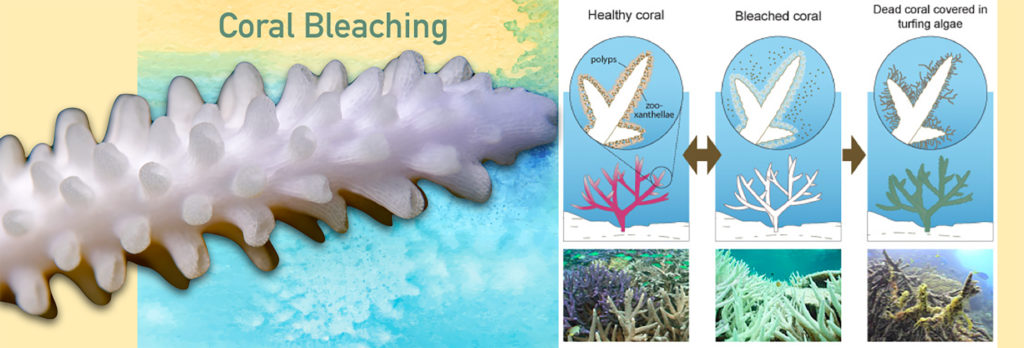
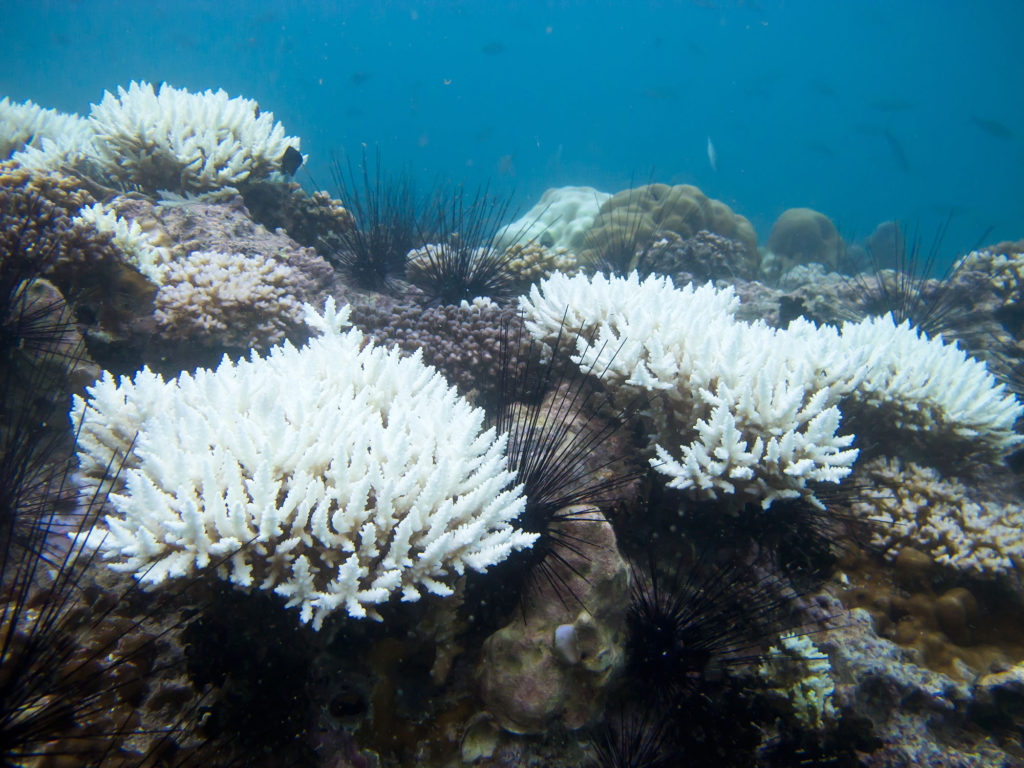
Dead or dying coral can become covered in algae, leaving it unlikely the colonies of coral animals will recover.
Many factors impact the mutualistic coral-zooxanthellae relationship, including water temperature, pH, nutrients, and fishing practices (explosives, nets).
Other coral reef organisms like this anemone can lose their photosymbionts and “bleach” over time.
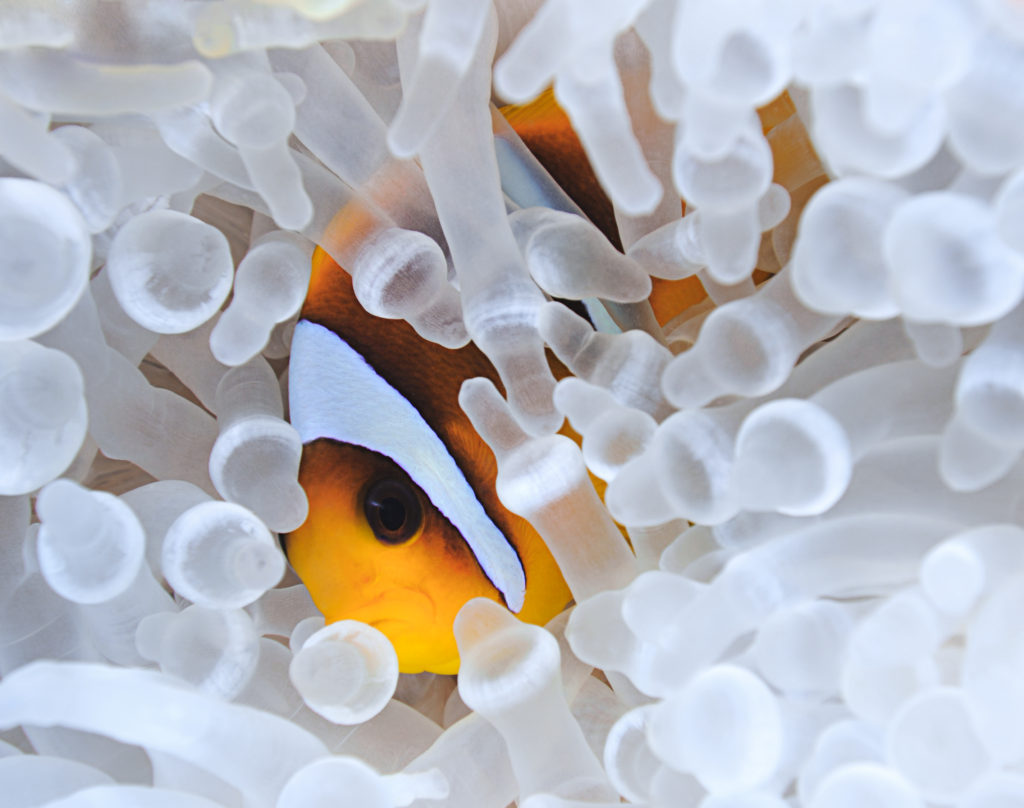
The next section introduces science discovery: exploring, describing, and explaining the natural world.

Check your knowledge. Can you:
- List the characteristics of coral animals?
- Describe the relationship between corals and zooxanthellae?
- Explain the process of “coral bleaching?”



